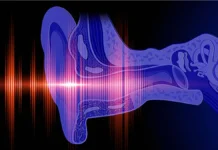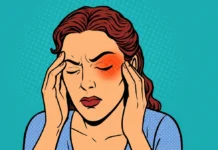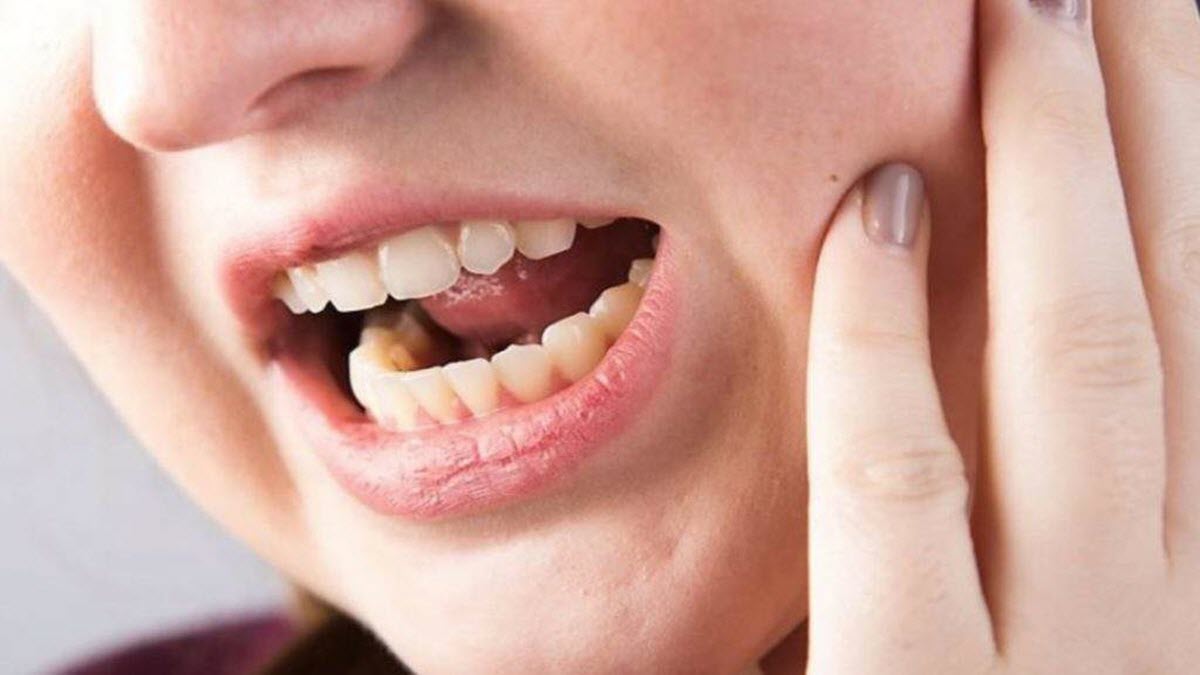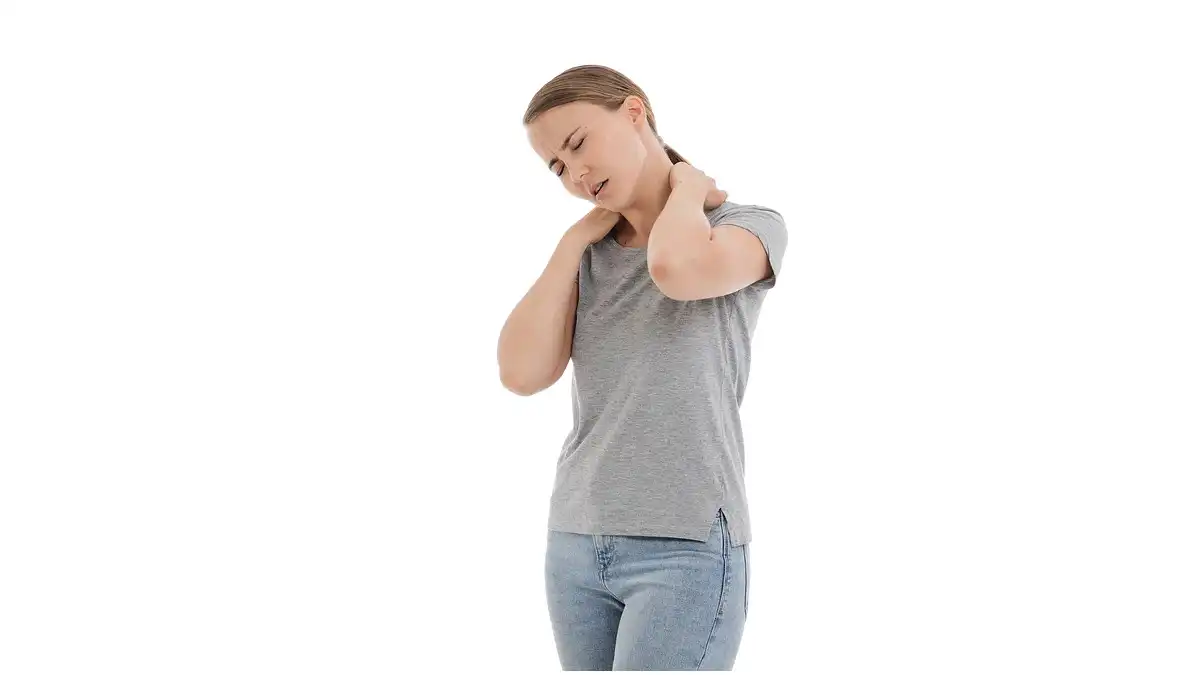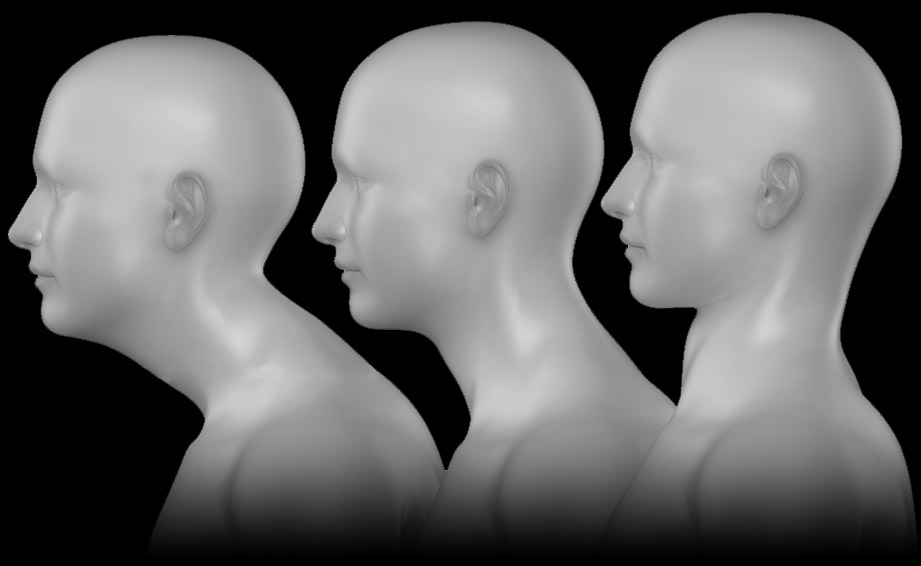Cervicogenic headache is a type of headache that originates in the neck but is felt as head pain. It is often the result of a condition in the structures of the neck, such as the muscles, joints or cervical nerves.
Introduction
Cervicogenic headaches (CGH) are a complex type of headache that originate from the cervical spine (neck) and radiate pain to the head. Unlike other types of headaches, such as tension headaches or migraines, cervicogenic headaches are specifically linked to abnormalities or dysfunctions in the neck structures, including the muscles, joints, nerves, and ligaments. This unique characteristic often makes diagnosing and treating cervicogenic headaches challenging for healthcare professionals.
One distinguishing feature of cervicogenic headaches is their unilateral nature, meaning they typically affect only one side of the head. The pain is often described as dull or aching and may be accompanied by neck stiffness or restricted range of motion. Individuals with cervicogenic headaches may also experience referred pain, where the discomfort from the neck area is perceived in the head, particularly around the temples, forehead, or behind the eyes.
Various factors can contribute to the development of cervicogenic headaches. Poor posture, repetitive strain injuries, trauma (such as whiplash), degenerative changes in the cervical spine (e.g., arthritis), and muscular imbalances are among the common culprits. Additionally, activities that involve prolonged sitting, computer work, or heavy lifting may exacerbate symptoms by placing excessive strain on the neck muscles and joints.
Diagnosing cervicogenic headaches typically involves a comprehensive assessment by a healthcare provider, which may include a detailed medical history, physical examination, and diagnostic imaging studies (such as X-rays, MRI, or CT scans) to rule out other potential causes of headache. Since cervicogenic headaches can mimic other types of headaches, an accurate diagnosis is crucial for implementing an effective treatment plan.
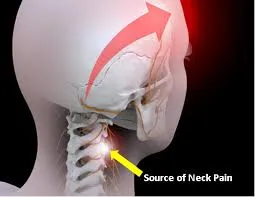
Important Warning: The information on this blog is for educational purposes only and not a substitute for professional medical advice. Do not attempt any maneuvers, exercises, or treatments described here without consulting a qualified healthcare professional. Improper application may lead to injury or complications. Always seek professional guidance for your specific health needs.
Diagnostic criteria for headache of cervical origin
The diagnosis of cervicogenic headache (CGH) is often challenging due to its overlapping symptoms with other headache disorders and neck conditions. Establishing clear diagnostic criteria is crucial for accurately identifying individuals with CGH and implementing appropriate treatment strategies. Several diagnostic criteria have been proposed by expert consensus panels and professional organizations to aid clinicians in diagnosing CGH and differentiating it from other headache disorders.
The International Headache Society (IHS) published diagnostic criteria for cervicogenic headache in the International Classification of Headache Disorders, 3rd edition (ICHD-3). According to these criteria, CGH is diagnosed when all of the following criteria are met:

These criteria emphasize the importance of establishing a temporal relationship between head pain and neck pain, as well as identifying a specific cervical disorder or lesion that is capable of causing headache symptoms. Resolution of headache following successful treatment of the underlying cervical pathology further supports the diagnosis of CGH.
In addition to the ICHD-3 criteria, other clinical features may aid in the diagnosis of CGH. These include unilateral head pain that is aggravated by neck movements or sustained postures, tenderness or trigger points in the muscles of the neck and shoulders, and limited range of motion in the cervical spine. Neurological symptoms such as dizziness, visual disturbances, or sensory changes may also be present, particularly if nerve compression or irritation is involved.
Diagnostic imaging studies such as magnetic resonance imaging (MRI) or computed tomography (CT) scans of the cervical spine may be useful in identifying structural abnormalities or lesions that could be contributing to CGH. Imaging findings such as disc herniation, osteoarthritis, spinal stenosis, or facet joint pathology may support the diagnosis of CGH, especially when correlated with clinical symptoms and physical examination findings.
Clinical assessment tools and questionnaires, such as the Neck Disability Index (NDI) or the Cervicogenic Headache Questionnaire (CHQ), can also aid in the diagnosis of CGH by quantifying the severity of neck-related disability and assessing the presence of headache symptoms characteristic of CGH. These tools may help clinicians evaluate the impact of CGH on patients’ daily functioning and monitor changes in symptoms over time.
It is important to note that the diagnosis of CGH is often one of exclusion, meaning that other primary headache disorders (such as migraines or tension-type headaches) and neck conditions (such as cervical radiculopathy or myofascial pain syndrome) must be ruled out before CGH can be confidently diagnosed. A comprehensive evaluation by a healthcare provider, including a thorough medical history, physical examination, and appropriate diagnostic testing, is essential for accurate diagnosis and effective management of CGH.
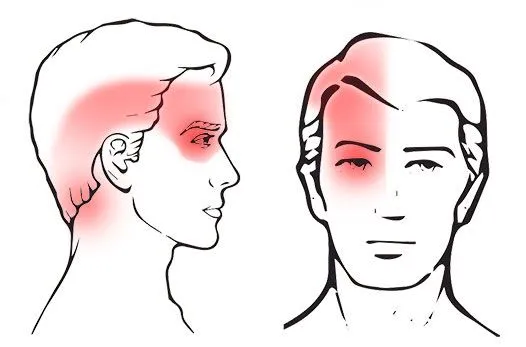
The diagnostic criteria for cervical headache are established to help healthcare professionals identify this specific type of headache. Criteria may vary depending on sources and classifications, but here are generally accepted criteria based on the International Classification of Headache Disorders (ICHD-3):
- Presence of Headache: Headache is the main symptom. It can be unilateral or bilateral.
- Evidence of Cervical Disorder: There must be evidence of cervical disorder or cervical injury, such as restricted movement, cervical tenderness, or pain caused by cervical palpation.
- Temporal Relationship to Neck Disorder: The headache must be triggered by a specific movement or position of the neck, or it may be aggravated by these factors.
- Exclusion of Other Causes: Other possible causes of headaches, such as migraines and tension headaches, should be excluded through medical evaluation.
- Positive Response to Cervical Interventions: There may be significant improvement in headache in response to specific interventions targeting the cervical region, such as cervical manipulation.
- Additional Criteria (depending on sources): Some criteria may include worsening pain with pressure on the cervical spinous processes, pain radiating to the head from the neck, or confirmation by imaging tests.
Causes of Cervicogenic Headache
Cervicogenic headaches, as the name suggests, stem from issues within the cervical spine or neck region. Understanding the various causes behind these headaches is crucial for accurate diagnosis and effective management. One common cause is poor posture, which places strain on the muscles and joints of the neck, leading to tension and discomfort. Prolonged periods of sitting with the head tilted forward, such as when using a computer or mobile device, can contribute to this problem. Over time, poor posture can lead to muscular imbalances and structural changes in the cervical spine, increasing the risk of cervicogenic headaches.
Traumatic injuries, such as whiplash from motor vehicle accidents or sports-related collisions, are another significant cause of cervicogenic headaches. These injuries can damage the soft tissues, joints, and nerves in the neck, resulting in persistent pain and dysfunction. Even minor traumas, such as falls or sudden jerking motions, can trigger cervicogenic headaches in susceptible individuals. It’s essential to seek medical attention following any head or neck injury to assess for potential underlying damage and prevent long-term complications.
Degenerative changes in the cervical spine, such as osteoarthritis or cervical spondylosis, are also common culprits behind cervicogenic headaches. As the spinal discs and facet joints deteriorate with age, they may become less able to absorb shock and maintain proper alignment, leading to inflammation and nerve compression. These degenerative processes can cause chronic neck pain and stiffness, as well as referred pain that manifests as headaches. Additionally, herniated discs or bone spurs in the cervical spine can irritate nearby nerves and contribute to cervicogenic headaches.
Muscular tension and trigger points in the neck and shoulder muscles are frequent triggers for cervicogenic headaches. Stress, anxiety, and poor ergonomics can exacerbate muscle tightness and lead to the development of painful knots or trigger points. These tender areas can refer pain to the head and contribute to headache symptoms. Addressing muscular imbalances and incorporating relaxation techniques, such as stretching, massage, or mindfulness practices, can help alleviate muscle tension and reduce the frequency and severity of cervicogenic headaches.
Structural abnormalities or congenital conditions affecting the cervical spine may predispose individuals to cervicogenic headaches. Conditions such as cervical spinal stenosis, congenital malformations, or anomalies in the vertebrae can cause nerve compression and spinal cord dysfunction, resulting in neck pain and headaches. Additionally, conditions like temporomandibular joint (TMJ) dysfunction, where there is dysfunction or misalignment of the jaw joint, can refer pain to the head and contribute to cervicogenic headaches. Identifying and addressing these underlying structural issues is essential for effectively managing cervicogenic headaches and improving overall neck health.
Here are some of the possible causes of these headaches:
- Cervical muscle tension: Excessive tension in the neck muscles, often due to poor posture, stress, or prolonged activities in an uncomfortable position, can trigger cervicogenic headaches.
- Cervical spondylosis: Degeneration of the cervical joints, also called cervical spondylosis, can lead to nerve irritation and head pain.
- Cervical Injuries: Trauma, such as car accidents, falls, or sports injuries, can damage cervical structures, causing cervicogenic headaches.
- Joint problems: The joints between the cervical vertebrae can be prone to dysfunction, such as subluxations or blockages, which can contribute to these headaches.
- Cervical neuralgia: Irritation or compression of the cervical nerves can lead to head pain. This can be caused by herniated discs, bone spurs, or other abnormalities.
- Poor Posture: Frequently adopting poor posture, whether sitting or standing, can place excessive pressure on the cervical region, contributing to cervicogenic headaches.
- Emotional stress: Stress and anxiety can cause muscle tension in the neck, triggering or worsening cervicogenic headaches.
Symptoms of Cervicogenic Headache
Cervicogenic headaches present a range of symptoms that can vary in intensity and duration. Understanding these symptoms is crucial for accurate diagnosis and effective management of the condition. One of the hallmark symptoms of cervicogenic headaches is unilateral head pain, meaning it typically affects one side of the head. This pain often originates from the base of the skull or the upper cervical spine and may radiate to the forehead, temple, or behind the eye on the same side. The pain is typically described as dull or aching, but it can also be sharp or throbbing in nature.
Neck pain and stiffness are commonly associated with cervicogenic headaches. Individuals may experience discomfort or tightness in the muscles of the neck and shoulders, which can worsen with certain movements or positions. Reduced range of motion in the neck, such as difficulty turning the head or tilting it backward, may also be present. The neck symptoms often precede or accompany the headache and may persist even after the headache has resolved.
Cervicogenic headaches can cause referred pain, meaning discomfort originating from the neck is perceived in other areas of the head or face. This referred pain can manifest as pain around the temples, forehead, or behind the eyes, mimicking the symptoms of other types of headaches such as migraines or tension headaches. Some individuals may also experience tenderness or sensitivity to touch over specific areas of the neck or scalp, known as trigger points.
In addition to head and neck pain, cervicogenic headaches can be associated with a range of neurological symptoms. These may include dizziness, vertigo, visual disturbances (such as blurred vision or sensitivity to light), and auditory symptoms (such as ringing in the ears or changes in hearing). These neurological symptoms are thought to result from irritation or compression of nerves in the cervical spine or from altered blood flow to the brain due to changes in posture or muscle tension.
Cervicogenic headaches can significantly impact daily functioning and quality of life. Individuals may experience difficulty concentrating, problems with memory or cognition, and decreased productivity at work or school. Sleep disturbances are also common, with many people reporting difficulty falling asleep or staying asleep due to pain or discomfort. Chronic cervicogenic headaches can lead to mood disturbances such as irritability, anxiety, or depression, further exacerbating the overall burden of the condition.
The presentation of cervicogenic headaches can vary widely among individuals, and symptoms may overlap with those of other headache disorders or neck conditions. As a result, accurate diagnosis requires a comprehensive evaluation by a healthcare professional, which may include a detailed medical history, physical examination, and diagnostic imaging studies. Differentiating cervicogenic headaches from other types of headaches is essential for developing an appropriate treatment plan and optimizing outcomes for patients.
Here are some of the common symptoms associated with these headaches:
- Localized Pain: Pain is usually felt in the neck area and base of the skull. It can radiate to the top of the head, forehead, temples or eyes.
- Unilateral Pain: Often, pain is felt on only one side of the head.
- Throbbing or Throbbing Pain: Pain is often described as throbbing, throbbing, or pounding.
- Worsens with Movement: Neck movements or prolonged positions can trigger or worsen pain.
- Cervical Stiffness: A feeling of stiffness or tension in the neck muscles may accompany headaches.
- Sensitivity to Touch: Some individuals may experience increased sensitivity in the cervical region, especially when pain is present.
- Prolonged Duration: Cervicogenic headaches can last for hours or even days, unlike other, shorter types of headaches.
- Known Triggers: Triggers such as stress, poor posture, repetitive neck movements or cervical injuries may be associated with the onset of headaches.
Pathophysiology of cervicogenic headache
The pathophysiology of cervicogenic headaches is multifaceted and involves complex interactions between the structures of the cervical spine, nerves, and pain-processing pathways in the brain. Unlike other types of headaches, which primarily originate within the head itself, cervicogenic headaches arise from abnormalities or dysfunctions in the cervical spine and surrounding tissues. Understanding the underlying mechanisms of cervicogenic headaches is crucial for developing effective treatment strategies and improving outcomes for individuals affected by this condition.
One key aspect of the pathophysiology of cervicogenic headaches is the convergence of sensory input from the cervical spine and the trigeminal nerve, which is responsible for sensation in the face and head. The upper three cervical spinal nerves (C1-C3) have sensory fibers that converge with the trigeminal nerve in the spinal trigeminal nucleus, a region in the brainstem involved in processing pain signals. Dysfunction in the cervical spine can lead to aberrant sensory input to the spinal trigeminal nucleus, resulting in the perception of pain in the head and face characteristic of cervicogenic headaches.
Structural abnormalities in the cervical spine, such as degenerative changes, herniated discs, or osteoarthritis, can contribute to the development of cervicogenic headaches by causing irritation or compression of nerves in the neck. For example, cervical disc herniation or foraminal stenosis can impinge on the nerve roots exiting the spine, leading to radiating pain and neurological symptoms that manifest as headaches. Similarly, facet joint dysfunction or muscle tension in the neck can stimulate nociceptive (pain-sensing) fibers, triggering pain signals that are perceived as headaches.
Altered biomechanics and proprioceptive dysfunction in the cervical spine may also play a role in the pathophysiology of cervicogenic headaches. Proprioception refers to the body’s ability to sense its position and movements in space, which relies on feedback from specialized sensory receptors in the muscles, joints, and ligaments. Dysfunction in the proprioceptive system can lead to impaired coordination of neck movements and abnormal muscle recruitment patterns, increasing the risk of pain and dysfunction in the cervical spine.
Inflammation and sensitization of peripheral nerves in the cervical spine and surrounding tissues contribute to the pain amplification characteristic of cervicogenic headaches. Inflammatory mediators released in response to tissue injury or degeneration can sensitize nociceptive nerve fibers, lowering the pain threshold and increasing the intensity of pain signals transmitted to the brain. This process, known as peripheral sensitization, can lead to persistent pain and hyperalgesia (increased sensitivity to painful stimuli) in individuals with cervicogenic headaches.
Central sensitization, which involves changes in the processing of pain signals within the central nervous system, is another important aspect of the pathophysiology of cervicogenic headaches. Prolonged nociceptive input from the cervical spine can lead to neuroplastic changes in the spinal cord and brain, resulting in heightened pain perception and amplification of pain signals. Central sensitization may contribute to the persistence of symptoms in individuals with chronic cervicogenic headaches and can make treatment more challenging.
- Anatomical Origin: Cervical nerve roots and nerves in the cervical region can become irritated due to a variety of causes, including muscle tension, trauma, joint disorders, or anatomical abnormalities.
- Cervical nerve irritation: Irritation of the cervical nerve roots can trigger nociceptive signals (pain signals) that are transmitted to the central nervous system.
- Transmission of signals to the brain: Pain signals from the cervical region are transmitted to the spinal cord and then relayed to the brain through the brainstem. This is where neck pain can be perceived as a headache.
- Central sensitization: Central sensitization processes can occur, where neurons in the central nervous system become more sensitive to nociceptive stimuli. This may contribute to an increase in pain perception.
- Influence on brain structures: Neck pain can affect different brain structures, including the thalamus and cerebral cortex, which are involved in pain perception and processing.
- Pain Reference: Neck pain can be felt in the head, particularly in the occipital region (at the back of the head), and can sometimes be confused with headaches of primary origin, such as migraine or tension headache.
- Triggering and Exacerbating Factors: Neck movements, prolonged posture, stress, or other factors can trigger or worsen cervicogenic headache symptoms.
- Association with other cervical disorders: Conditions such as cervical spondylosis, herniated cervical discs, or other disorders of the cervical spine may contribute to cervicogenic headache.
Differential diagnostis of cervical headache
Differential diagnosis of cervical headache involves distinguishing cervicogenic headache (CGH) from other primary headache disorders, secondary headaches, and neck-related conditions that can manifest with similar symptoms. Given the overlap in clinical features among these conditions, a thorough evaluation is essential to accurately diagnose and appropriately manage patients presenting with cervical headache symptoms.
Primary headache disorders such as migraines and tension-type headaches are among the most common differentials for CGH. Migraines typically present with pulsating head pain, photophobia, phonophobia, and nausea, often accompanied by aura symptoms such as visual disturbances or sensory changes. Tension-type headaches, on the other hand, are characterized by bilateral, pressing or tightening head pain without associated neurological symptoms. Distinguishing CGH from migraines and tension-type headaches relies on identifying the presence of neck pain or stiffness and correlating headache symptoms with cervical dysfunction.
Secondary headaches, including those arising from intracranial causes or systemic conditions, should be considered in the differential diagnosis of CGH. Intracranial causes such as subarachnoid hemorrhage, intracranial mass lesions, or meningitis may present with sudden-onset severe headache, altered mental status, focal neurological deficits, or signs of increased intracranial pressure. Systemic conditions such as hypertension, medication overuse, or substance withdrawal can also manifest with headache symptoms. Differentiating CGH from secondary headaches requires a thorough medical history, physical examination, and appropriate diagnostic testing, including neuroimaging studies and laboratory investigations.
Various neck-related conditions can mimic the symptoms of CGH and should be included in the differential diagnosis. Cervical radiculopathy, resulting from compression or irritation of spinal nerve roots in the cervical spine, can cause radiating arm pain, sensory changes, and muscle weakness in addition to headache symptoms. Myofascial pain syndrome, characterized by trigger points in the neck and shoulder muscles, can refer pain to the head and contribute to headache symptoms. Differentiating CGH from neck-related conditions often requires a detailed assessment of cervical spine function, including range of motion, strength, and sensory examination.
Temporomandibular joint (TMJ) disorders are another important consideration in the differential diagnosis of CGH, particularly when symptoms involve the jaw and facial regions. TMJ disorders can present with jaw pain, clicking or popping sounds during jaw movement, difficulty chewing, and referred pain to the head and neck. Evaluating for TMJ dysfunction may involve palpation of the temporomandibular joint, assessment of jaw movement, and imaging studies such as panoramic radiographs or MRI.
Vascular headaches, including cluster headaches and giant cell arteritis, should also be considered in the differential diagnosis of CGH, especially in older adults or individuals with specific risk factors. Cluster headaches typically present with severe, unilateral head pain, autonomic symptoms such as lacrimation or nasal congestion, and a characteristic circadian pattern of attacks. Giant cell arteritis, a systemic vasculitis affecting medium and large arteries, can present with headache, scalp tenderness, jaw claudication, and visual disturbances. Differentiating CGH from vascular headaches may require specialized diagnostic testing, such as temporal artery biopsy or neuroimaging studies.
List of differential diagnosis
- Migraine Headache: Migraines often present with unilateral throbbing pain, nausea, vomiting, photophobia (sensitivity to light), and phonophobia (sensitivity to sound). However, they can also be accompanied by neck pain and stiffness, which can sometimes mimic cervical headaches.
- Tension-type Headache: Tension headaches typically present with bilateral, dull, non-throbbing pain that feels like a tight band around the head. While they primarily involve the head and scalp, they can also cause neck pain and stiffness.
- Cluster Headache: Cluster headaches are characterized by severe, unilateral pain around the eye or temple, often accompanied by autonomic symptoms such as tearing, nasal congestion, and eyelid drooping. While neck pain is not a typical feature of cluster headaches, some patients may experience it.
- Occipital Neuralgia: Occipital neuralgia causes sharp, shooting pain in the back of the head and neck, often radiating to the top of the head or behind the eyes. It’s caused by irritation or injury to the occipital nerves, which can be triggered by neck trauma or compression.
- Cervical Radiculopathy: Cervical radiculopathy occurs when a nerve root in the cervical spine is compressed or inflamed, leading to pain, numbness, tingling, and weakness that radiates down the arm. However, it can also cause referred pain in the neck and head.
- Temporomandibular Joint (TMJ) Disorder: Dysfunction of the temporomandibular joint can cause referred pain to the temples, forehead, and neck, mimicking a headache. Symptoms may include jaw pain, clicking or popping sounds, and difficulty chewing.
- Sinusitis: Inflammation of the sinuses can cause facial pressure, pain around the eyes and forehead, and sometimes neck discomfort. It’s important to differentiate sinus headaches from other types of headaches, as they may require different treatment approaches.
- Intracranial Causes: Rarely, headaches may be a symptom of more serious intracranial conditions such as brain tumors, intracranial hemorrhage, or meningitis. These conditions typically present with additional neurological symptoms and require urgent evaluation and management.
- Post-traumatic Headache: Following a head or neck injury, such as whiplash from a car accident or a sports-related concussion, individuals may experience persistent headaches. These headaches can be accompanied by neck pain and stiffness and may be indicative of post-traumatic headache syndrome.
- Fibromyalgia: Fibromyalgia is a chronic pain disorder characterized by widespread musculoskeletal pain, fatigue, sleep disturbances, and tender points throughout the body, including the neck and shoulders. Cervical headaches can be a manifestation of fibromyalgia in some cases.
- Myofascial Pain Syndrome: Myofascial pain syndrome involves the presence of trigger points in muscles, which can cause localized or referred pain, including headaches. Trigger points in the neck and shoulder muscles can contribute to cervical headaches.
- Cervical Osteoarthritis: Degenerative changes in the cervical spine, such as osteoarthritis or cervical spondylosis, can lead to chronic neck pain and headaches. These headaches may worsen with movement or certain positions and can be exacerbated by inflammation and joint dysfunction.
- Vertebral Artery Dissection: Although rare, vertebral artery dissection is a serious condition characterized by the tearing of the inner layers of the vertebral artery, which can lead to neck pain, headache, and neurological symptoms such as dizziness, visual disturbances, and stroke-like symptoms. It often occurs following trauma to the neck or spontaneously.
- Infections: Infections of the upper respiratory tract or cervical spine, such as meningitis, encephalitis, or spinal epidural abscess, can present with headache and neck stiffness. These conditions typically have accompanying systemic symptoms and require prompt medical attention.
- Referred Pain from Upper Back or Shoulder Pathologies: Dysfunction or pathology in the upper back, shoulder, or chest wall (such as rotator cuff injury, thoracic outlet syndrome, or costochondritis) can refer pain to the neck and head, mimicking cervical headaches.
- Psychological Factors: Psychological factors, including stress, anxiety, and depression, can exacerbate or contribute to chronic headaches, including those of cervical origin. Psychological assessment may be warranted in individuals with refractory headaches or significant emotional distress.
Osteopathy and cervicogenic headache
Here are some general techniques that can be used when treating cervicogenic headaches in osteopathy:
- Muscle Stretches: Stretching techniques can be applied to loosen tight neck and shoulder muscles. This can help reduce pressure on nerves and blood vessels.
- Joint Mobilizations: Specific movements can be used to mobilize the cervical joints and restore their normal range of motion.
- Skull Manipulations: The osteopath can also work on the joints of the skull, as tension in this area can also contribute to headaches.
- Myofascial Release Techniques: The osteopath can use myofascial release techniques to release tension in the connective tissues surrounding muscles and joints.
- Patient Education: Patient education is often an important aspect of treatment. The osteopath can provide advice on posture, specific exercises to do at home and self-help techniques to manage pain.
It is crucial that these techniques are tailored to the specific needs of each patient and applied carefully.
Scientific Insights: The Efficacy of Osteopathy and Soft Tissue Approaches in Treating Cervicogenic Headaches
This section explores recent scientific studies that highlight the benefits of osteopathic treatments, including osteopathic manipulative treatment (OMT) and other soft tissue approaches, for managing cervicogenic headaches. Techniques such as high-velocity, low-amplitude (HVLA) thrusts, cervical spine mobilization, and myofascial release have shown significant reductions in headache intensity, frequency, and associated neck pain, providing effective and non-invasive alternatives for headache relief.
Effectiveness of Osteopathic Manipulative Treatment (OMT):
- Studies show that OMT can significantly reduce the intensity and frequency of cervicogenic headaches. Techniques such as high-velocity, low-amplitude (HVLA) thrusts and cervical spine mobilization are commonly used.
- Regular sessions tend to yield better outcomes, with reductions in headache-related disability and neck pain observed in participants (BioMed Central).
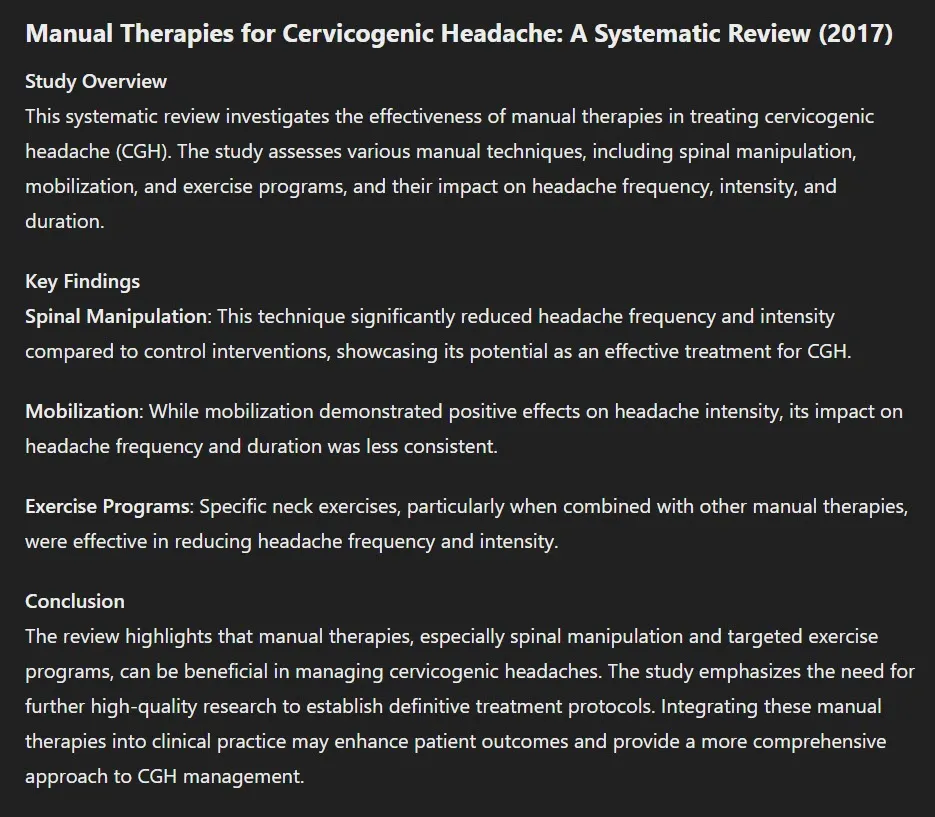
“The effectiveness of manual and exercise therapy on headache intensity and frequency among patients with cervicogenic headache: a systematic review and meta-analysis” – This meta-analysis examined various manual therapies and exercise regimens, finding that these interventions significantly reduced headache intensity and frequency. The study emphasized the importance of tailored manual therapy for managing cervicogenic headaches (BioMed Central).

Quizz
Questions and answers
Question 1: What is cervicogenic headache?
a) A headache of dental origin
b) A headache of cervical origin
c) A headache of gastrointestinal origin
d) A headache of ophthalmic origin
Question 2: Which neck structures are often involved in cervicogenic headache?
a) Arteries
b) Cervical muscles, joints or nerves
c) Thoracic vertebrae
d) Thyroid glands
Question 3: What is the main criterion for diagnosing cervicogenic headache according to the International Classification of Headache Disorders (ICHD-3)?
a) Presence of nausea
b) Presence of headache
c) Positive response to cervical interventions
d) Cervical muscle tension
Question 4: How can the pathophysiology of cervicogenic headache influence brain structures?
a) By reducing the sensitivity of neurons
b) By stimulating the growth of brain cells
c) By affecting the thalamus and the cerebral cortex
d) By improving cerebral blood circulation
Question 5: What is the anatomical origin of pain in cervicogenic headache?
a) Sinuses
b) Cervical nerve roots and nerves of the cervical region
c) Cerebral ventricles
d) Frontal lobes
Question 6: What factor can trigger or worsen cervicogenic headache symptoms?
a) Exposure to sunlight
b) Caffeine consumption
c) Neck movements, prolonged posture, stress, or other factors
d) Fruit consumption
Question 7: What type of treatment can be used in osteopathy for cervicogenic headaches?
a) Antibiotics
b) Radiotherapy
c) Muscle stretching, joint mobilizations, skull manipulations, myofascial release techniques
d) Brain surgery
Question 8: What is a possible cause of cervicogenic headache related to degeneration of the cervical joints?
a) Bad posture
b) Neck injuries
c) Cervical muscle tension
d) Cervical neuralgia
Question 9: What diagnostic criterion excludes other possible causes of headache in cervicogenic headache?
a) Presence of headache
b) Evidence of cervical disorder
c) Positive response to cervical interventions
d) Exclusion of other causes
Question 10: What symptom is often associated with cervicogenic headache?
a) Stomach pain
b) One-sided head pain
c) Blurred vision
d) Pain in the arms
- b) A headache of cervical origin
- b) The cervical muscles, joints or nerves
- b) Presence of headache
- c) By affecting the thalamus and the cerebral cortex
- b) The cervical nerve roots and the nerves of the cervical region
- c) Neck movements, prolonged posture, stress, or other factors
- c) Muscle stretching, joint mobilizations, skull manipulations, myofascial release techniques
- a) Bad posture
- d) Exclusion of other causes
- b) Unilateral head pain
Reference
- Sjaastad O, Saunte C, Hovdahl H, Breivik H, Grønbaek E. “Cervicogenic” headache. An hypothesis. Cephalalgia. 1983 Dec;3(4):249-56. [PubMed]2.
- Kane AW, Diaz DS, Moore C. Physical Therapy Management of Adults with Mild Traumatic Brain Injury. Semin Speech Lang. 2019 Feb;40(1):36-47. [PubMed]3.
- Wu B, Yue L, Sun F, Gao S, Liang B, Tao T. The Feasibility and Efficacy of Ultrasound-Guided C2 Nerve Root Coblation for Cervicogenic Headache. Pain Med. 2019 Jun 01;20(6):1219-1226. [PubMed]4.
- Moye LS, Tipton AF, Dripps I, Sheets Z, Crombie A, Violin JD, Pradhan AA. Delta opioid receptor agonists are effective for multiple types of headache disorders. Neuropharmacology. 2019 Apr;148:77-86. [PMC free article] [PubMed]5.
- Mares C, Dagher JH, Harissi-Dagher M. Narrative Review of the Pathophysiology of Headaches and Photosensitivity in Mild Traumatic Brain Injury and Concussion. Can J Neurol Sci. 2019 Jan;46(1):14-22. [PubMed]6.
- Silverberg ND, Martin P, Panenka WJ. Headache Trigger Sensitivity and Avoidance after Mild Traumatic Brain Injury. J Neurotrauma. 2019 May 15;36(10):1544-1550. [PubMed]7.
- Bogduk N, Govind J. Cervicogenic headache: an assessment of the evidence on clinical diagnosis, invasive tests, and treatment. Lancet Neurol. 2009 Oct;8(10):959-68. [PubMed]8.
- Lane R, Davies P. Post traumatic headache (PTH) in a cohort of UK compensation claimants. Cephalalgia. 2019 Apr;39(5):641-647. [PubMed]9.
- Sjaastad O. Cervicogenic headache: comparison with migraine without aura; Vågå study. Cephalalgia. 2008 Jul;28 Suppl 1:18-20. [PubMed]10.
- Park SW, Park YS, Nam TK, Cho TG. The effect of radiofrequency neurotomy of lower cervical medial branches on cervicogenic headache. J Korean Neurosurg Soc. 2011 Dec;50(6):507-11. [PMC free article] [PubMed]11.
- Pöllmann W, Keidel M, Pfaffenrath V. Headache and the cervical spine: a critical review. Cephalalgia. 1997 Dec;17(8):801-16. [PubMed]12.
- Knackstedt H, Kråkenes J, Bansevicius D, Russell MB. Magnetic resonance imaging of craniovertebral structures: clinical significance in cervicogenic headaches. J Headache Pain. 2012 Jan;13(1):39-44. [PMC free article] [PubMed]13.
- Headache Classification Committee of the International Headache Society (IHS) The International Classification of Headache Disorders, 3rd edition. Cephalalgia. 2018 Jan;38(1):1-211. [PubMed]14.
- Bogduk N. The neck and headaches. Neurol Clin. 2004 Feb;22(1):151-71, vii. [PubMed]15.
- Hall T, Chan HT, Christensen L, Odenthal B, Wells C, Robinson K. Efficacy of a C1-C2 self-sustained natural apophyseal glide (SNAG) in the management of cervicogenic headache. J Orthop Sports Phys Ther. 2007 Mar;37(3):100-7. [PubMed]16.
- Grimholt TK, Skogstad L, Hafstad GS, Vallersnes OM, Ekeberg Ø. [July 22, 2011 – psychological reactions in patients at the accident and emergency department in Oslo]. Tidsskr Nor Laegeforen. 2018 Jun 26;138(11) [PubMed]17.
- Zhou L, Hud-Shakoor Z, Hennessey C, Ashkenazi A. Upper cervical facet joint and spinal rami blocks for the treatment of cervicogenic headache. Headache. 2010 Apr;50(4):657-63. [PubMed]18.
- Boudreau GP, Marchand L. Pregabalin for the management of cervicogenic headache: a double blind study. Can J Neurol Sci. 2014 Sep;41(5):603-10. [PubMed]19.
- Berk T, Ashina S, Martin V, Newman L, Vij B. Diagnosis and Treatment of Primary Headache Disorders in Older Adults. J Am Geriatr Soc. 2018 Dec;66(12):2408-2416. [PubMed]20.
- Campos CR, Calderaro M, Scaff M, Conforto AB. Primary headaches and painful spontaneous cervical artery dissection. J Headache Pain. 2007 Jun;8(3):180-4. [PMC free article] [PubMed]21.
- Allen NM, Dafsari HS, Wraige E, Jungbluth H. Neck-Tongue Syndrome: An Underrecognized Childhood Onset Cephalalgia. J Child Neurol. 2018 Apr;33(5):347-350. [PubMed]22.
- Fleming R, Forsythe S, Cook C. Influential variables associated with outcomes in patients with cervicogenic headache. J Man Manip Ther. 2007;15(3):155-64. [PMC free article] [PubMed]



